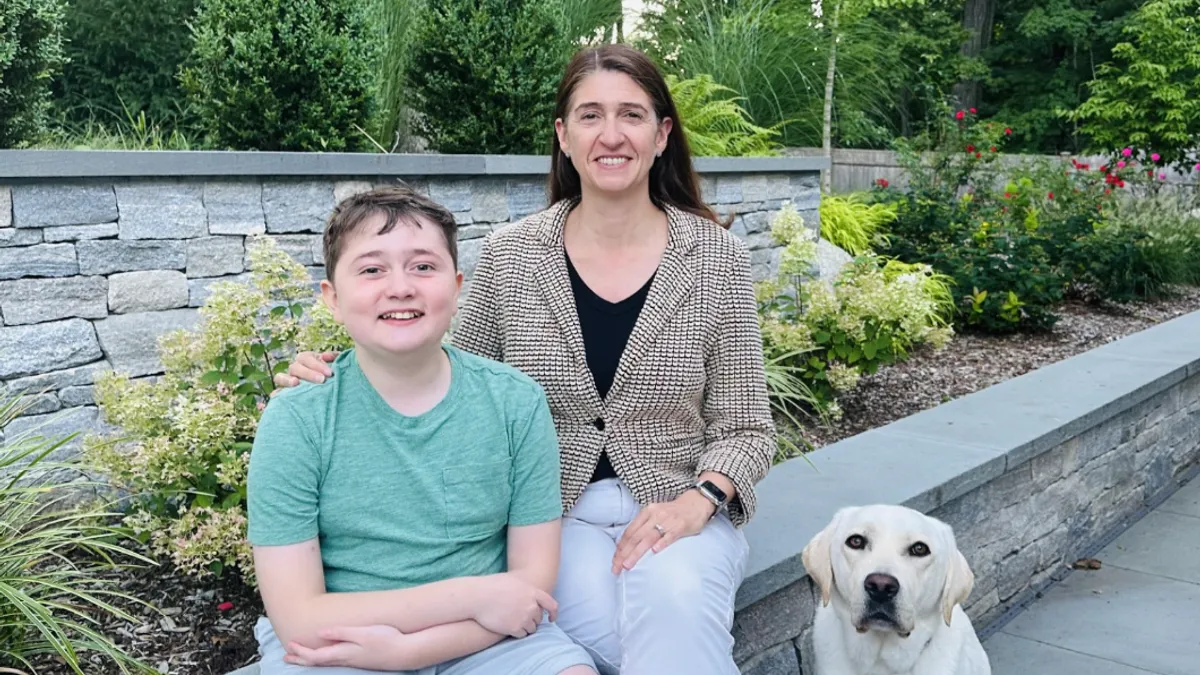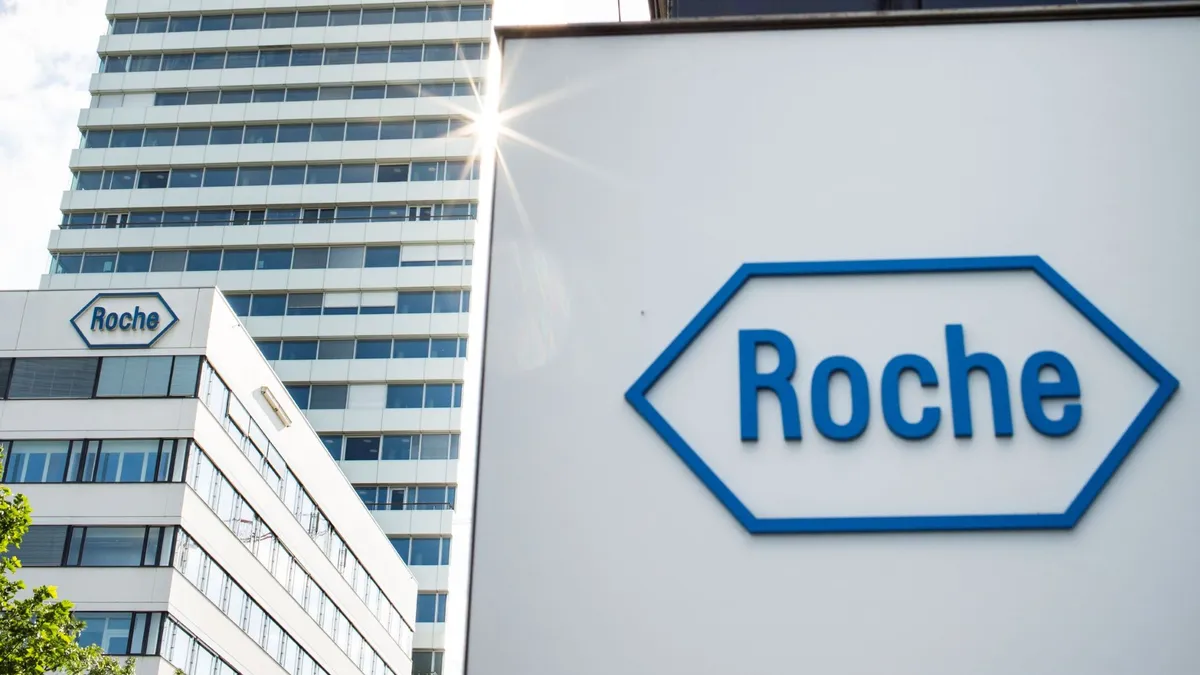Underneath the shiny new clinical results and methodologies highlighted at an industry conference like the annual meeting of the American Society of Hematology is a wholehearted commitment to patient outcomes and advancing medical understanding of devastating diseases.

Just ask the Leukemia and Lymphoma Society, or LLS, which has teamed up with drugmakers around the world to run umbrella trials designed to bring precision medicines to patients with acute myeloid leukemia, or AML. The nonprofit group discussed results at the annual meeting this week, known colloquially as ASH, where the world's biggest drugmakers also convene to call attention to their progress in treating blood cancers and other hematologic diseases.
"The meeting showcases what advances have been made in blood cancers, and it gets to showcase a lot of the support and things that we as a society have put forth," Amy Burd, vice president of research strategy at LLS, said. "It's a great place for collaboration and what people often miss because it's so scientifically driven is that there's also a lot of patient advocacy that happens at this meeting, as well."
Working with pharmas
Beginning in November 2016, the LLS has run an ongoing study called the Beat AML Master Clinical Trial in patients with newly diagnosed AML who are 60 years and older. The researchers chose that population due to the high unmet need, Burd said. Among the Beat AML trial data being presented at ASH this year are patient-reported outcomes for quality of life and long-term follow-up on an oral medication for AML.
"LLS decided to go down the path of doing this huge precision medicine umbrella trial, mostly because we were spending 25% of our annual research budget on AML — and at the time about seven or eight years ago, there hadn't been a new approval in AML in over 40 years," Burd said.
As part of the trial, LLS also worked with treatments from drugmakers like Bristol Myers Squibb, AbbVie, Gilead and more to find agents that would work alone and in combination with others that took a precision medicine approach. For instance, AbbVie's Venclexta is part of the study.
“The way we work together (with pharma) is coming to a common goal — they want to get their drug approved or advance it in some way, while our goal is to help find patients and get better outcomes and access."

Amy Burd
Vice president, research strategy, LLS
"AML is a disease that is a constellation of diseases, so there are a lot of different molecular groups, which is why it was really primed for a precision medicine approach," Burd said. "When you look at the field and you say, 'Well, who has what agents that are best in class?' And so we started to work with those companies that we felt had the best-in-class drug that we could (use to) target that specific molecular group."
Now, the organization is setting out on a pediatric version of the study, buoyed by the success of the first one, because children with leukemia represent another highly unmet need in the space.
Part of the global approach to these large studies is creating efficiencies to ultimately bring drugs to market or expand their indications more quickly for the sake of patients.
"The cost of doing trials is the cost of doing trials — but if you can find the correct patients for your trial and do the trial internationally, it will definitely go faster," Gwen Nichols, chief medical officer at LLS said.
The LLS spends about $60 million in research annually, and their work alongside pharmaceutical companies is key to bringing drugs to patients that need them.
"The way we work together (with pharma) is coming to a common goal — they want to get their drug approved or advance it in some way, while our goal is to help find patients and get better outcomes and access," Burd said. "The two sides come together pretty easily, and how we work together is we jointly work on the protocols, and it's a true collaboration."
And for the patient community, one of the overwhelmingly supportive parts of a meeting like ASH is seeing the work that experts are putting into treating and potentially curing these diseases, Nichols said.
"Patients can see that the docs and scientists are really in their corner, because it's hard to see that at one institution in the same way as seeing 20,000 or 30,000 people who are focused on the problem that you're facing," Nichols said.
The next generation

Outcomes for patients with hematological malignancies like leukemia, lymphoma, multiple myeloma and more have advanced in recent years due to new types of therapies, including CAR-T cell therapy and bispecific antibodies. But manufacturing and patient access for these precision medicines has been a bottleneck for the fledgling space, and researchers are looking for ways to push the field into the next generation.
One of the most anticipated results at this year's ASH has been a phase 1/2 study of talquetamab from Johnson & Johnson's Janssen, a bispecific T-cell engager antibody aiming at a new target on multiple myeloma cells. The company showcased a response rate to the therapy of more than 73%.
"We think with the right harnessing of the immune system that Talquetamab can deliver, we're showing at the ASH meeting a very robust anti-myeloma activity both with a weekly and biweekly schedule," said Craig Tendler, vice president of oncology clinical development and global medical affairs at Janssen. "That early evidence … is a very good benefit-risk profile, and I think that will come across very clearly in the data."
Janssen works with several nonprofits akin to the LLS, like the Multiple Myeloma Research Foundation and the International Myeloma Foundation.
"We've had a very good long-standing relationship with the leaders of those organizations, often hearing from them about what patients are looking for and what's important from a patient point of view in terms of drug development programs and sometimes even running some of our studies through those sorts of consortiums," Tendler said.
The importance of a meeting like ASH is to focus on reporting practice-changing results where patients aren't getting the optimal outcome with the current standard of care, he added.
And with talquetamab and Janssen's CAR-T therapy Carvykti, the company is looking to find a way to reach patients more quickly and with fewer hurdles for treatment.
"It's not for everybody because it's not an off-the-shelf option," Tendler said of Carvykti, also used to treat multiple myeloma, where the pharma giant is looking to move into earlier disease settings. But having a deep bench with both bispecific antibodies and CAR-T options, the company is exploring multiple ways to treat the disease at once.
"Like any new technology, I think we're going to continue to see that over time, the manufacturing will become more consistent and will be more streamlined," Tendler said. "I'd say we're not optimal there yet, but we're continuing to get better and better."
For those at the LLS, CAR-T stands out among the field of blood cancer treatments, particularly with the promise these cell therapies have beyond the current generation.
"CAR-T is still in generation one — and so while that data is important, trying to enhance CAR-T will help many more people," Nichols said. "The next step, the next iteration is what's really interesting to me in that space.”





















